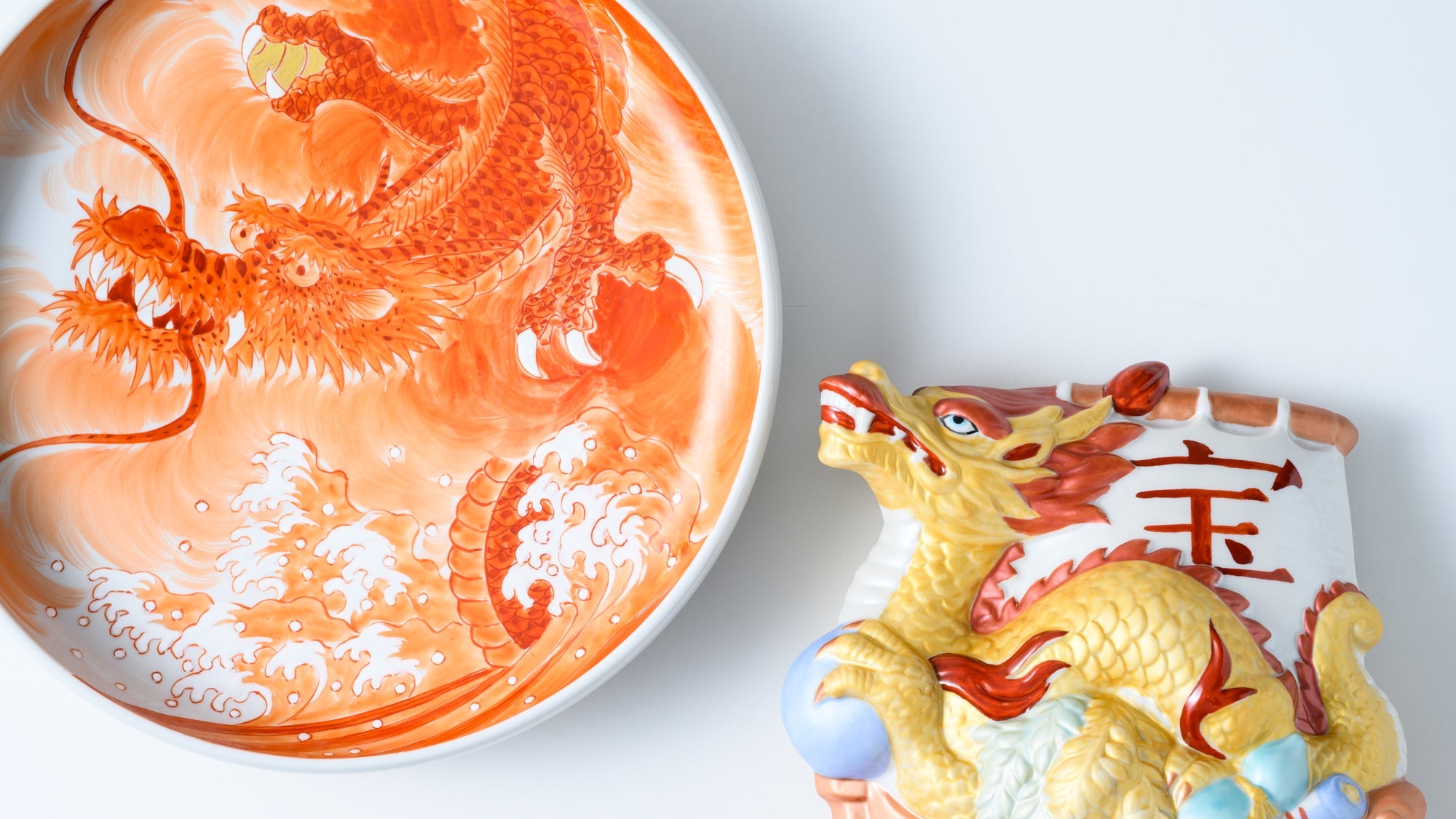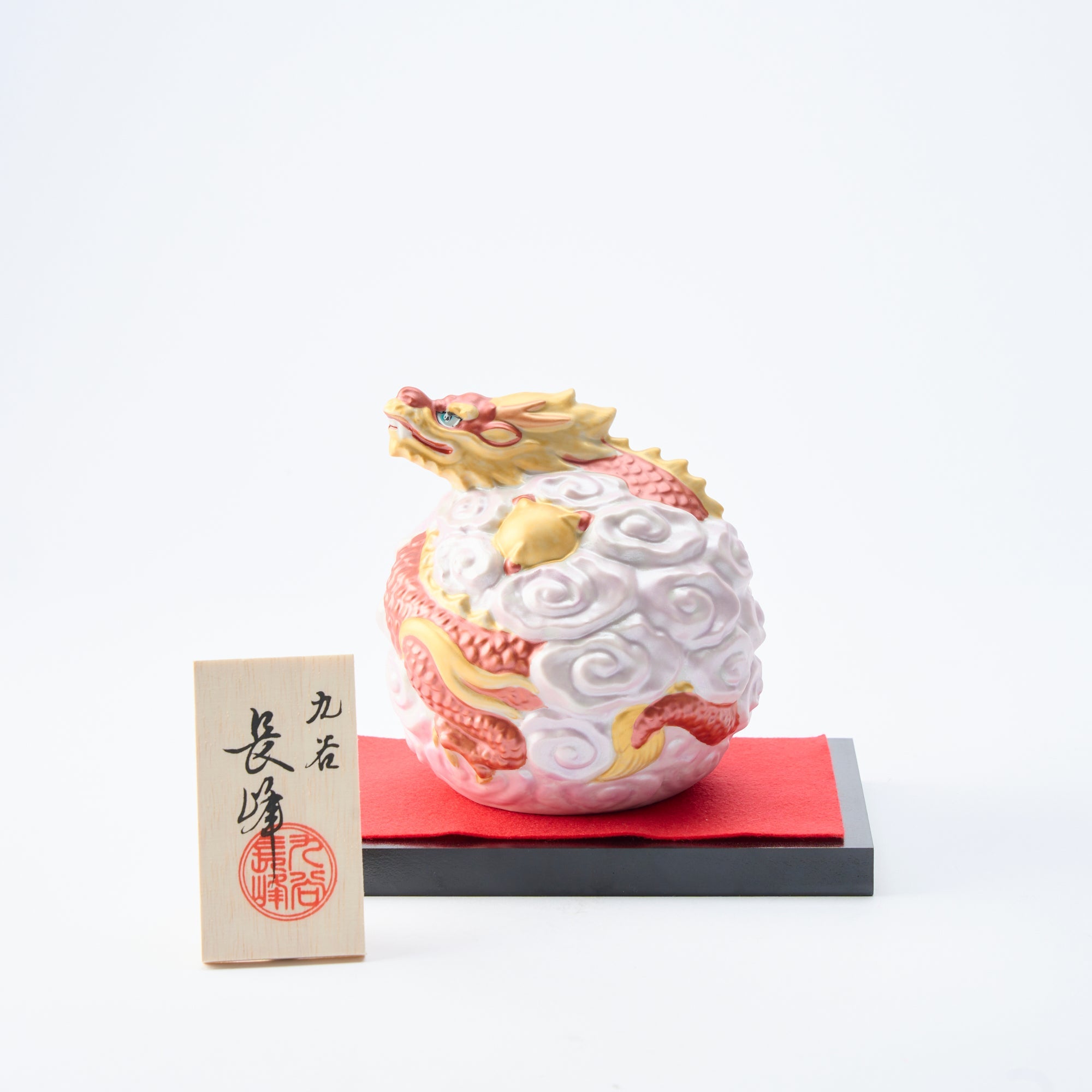
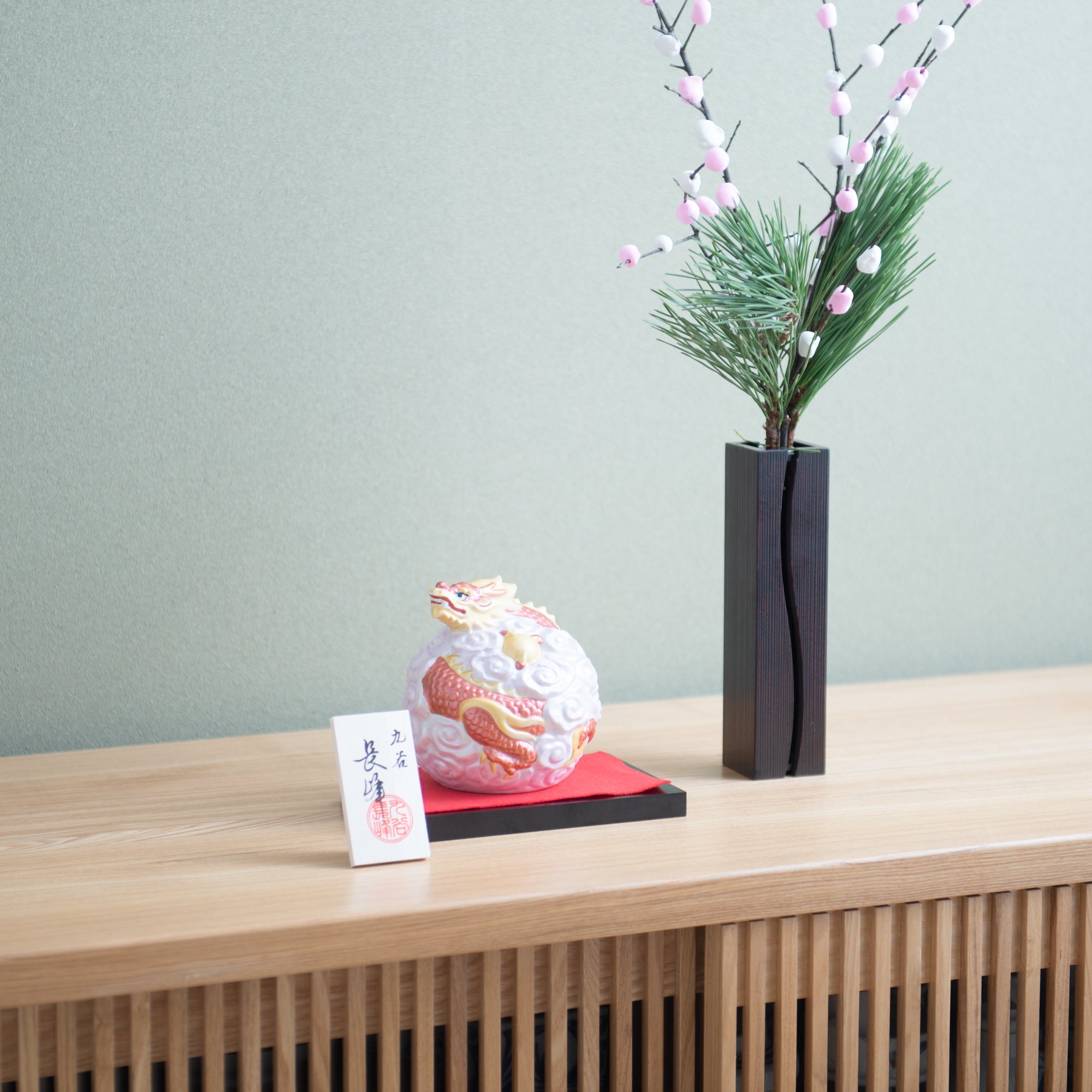
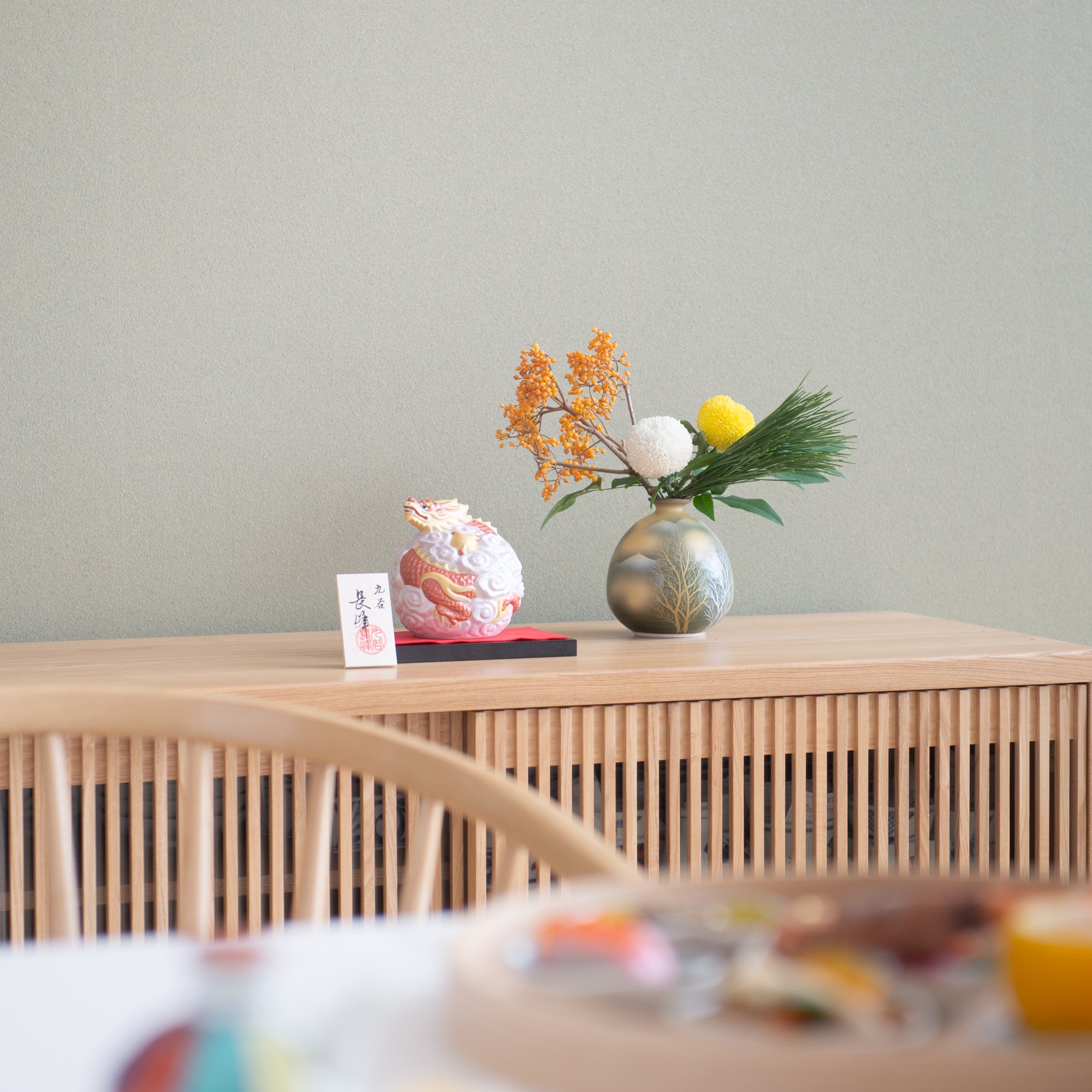
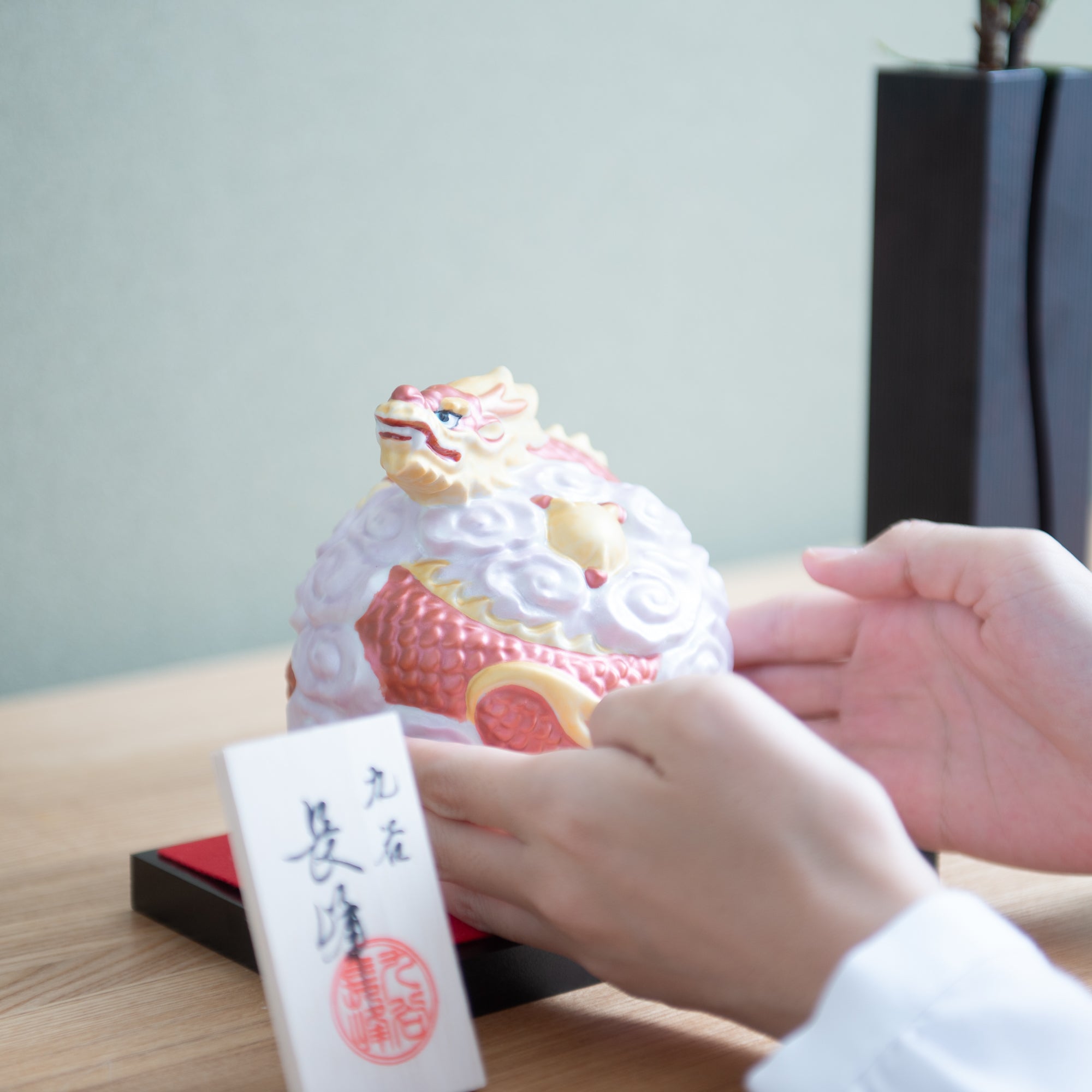
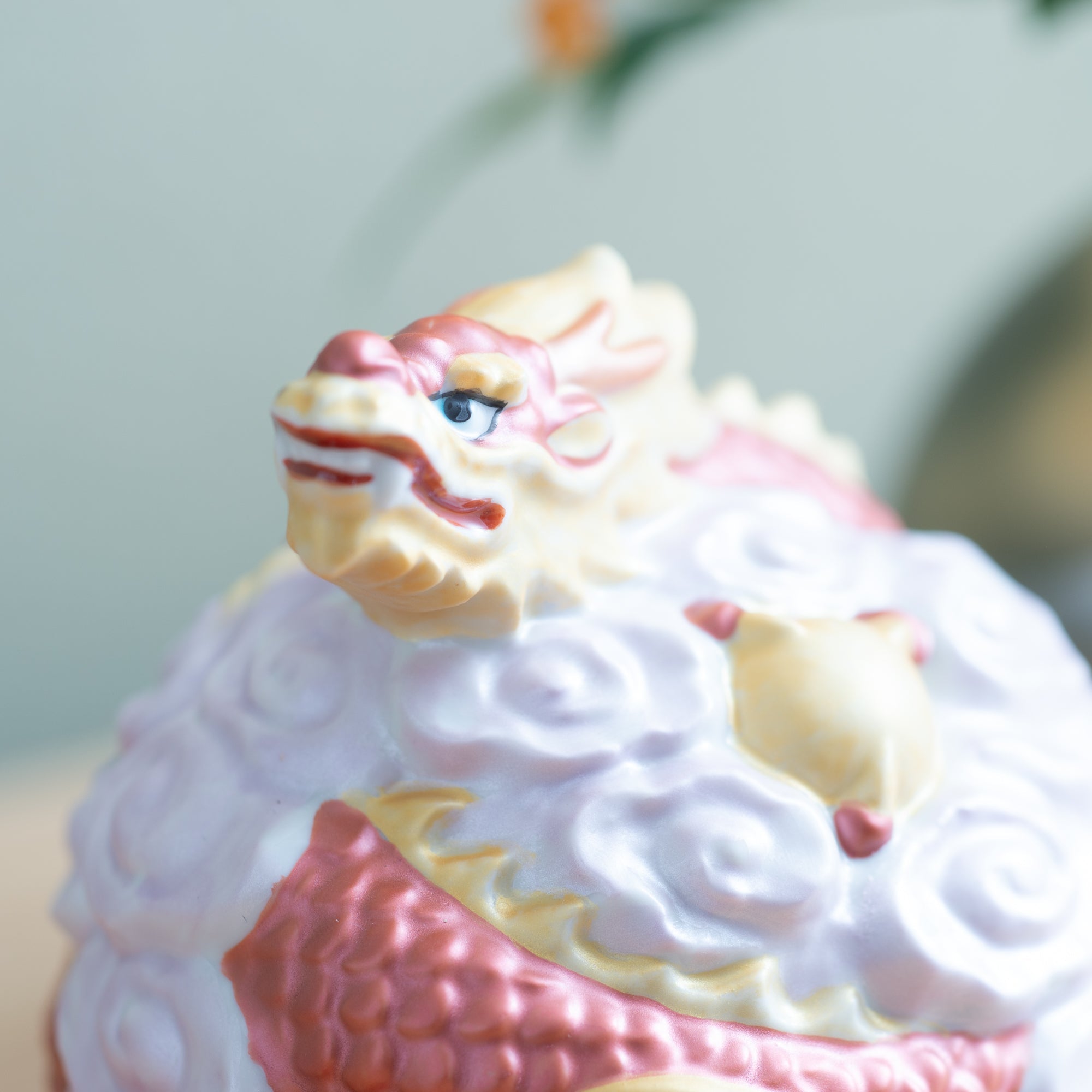
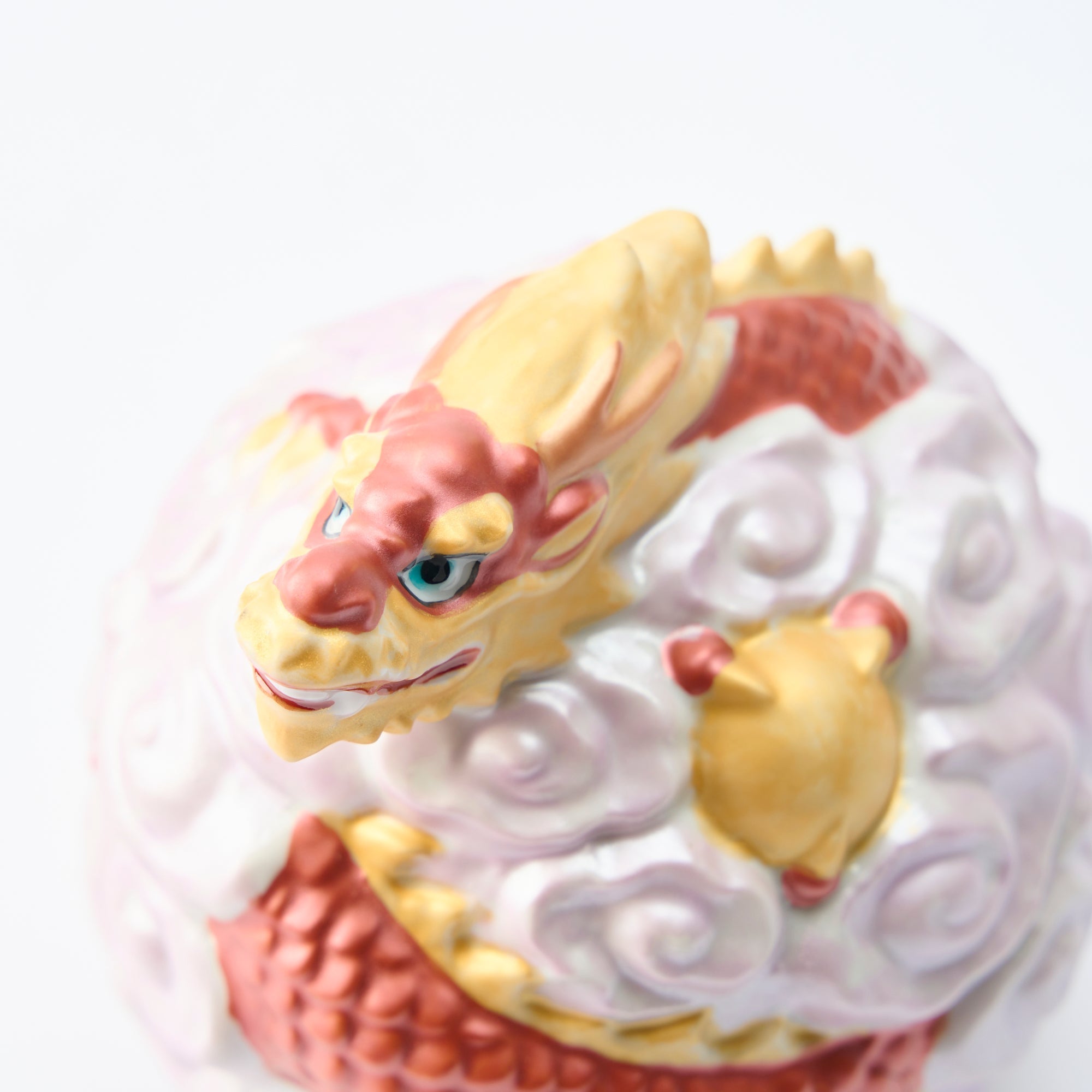
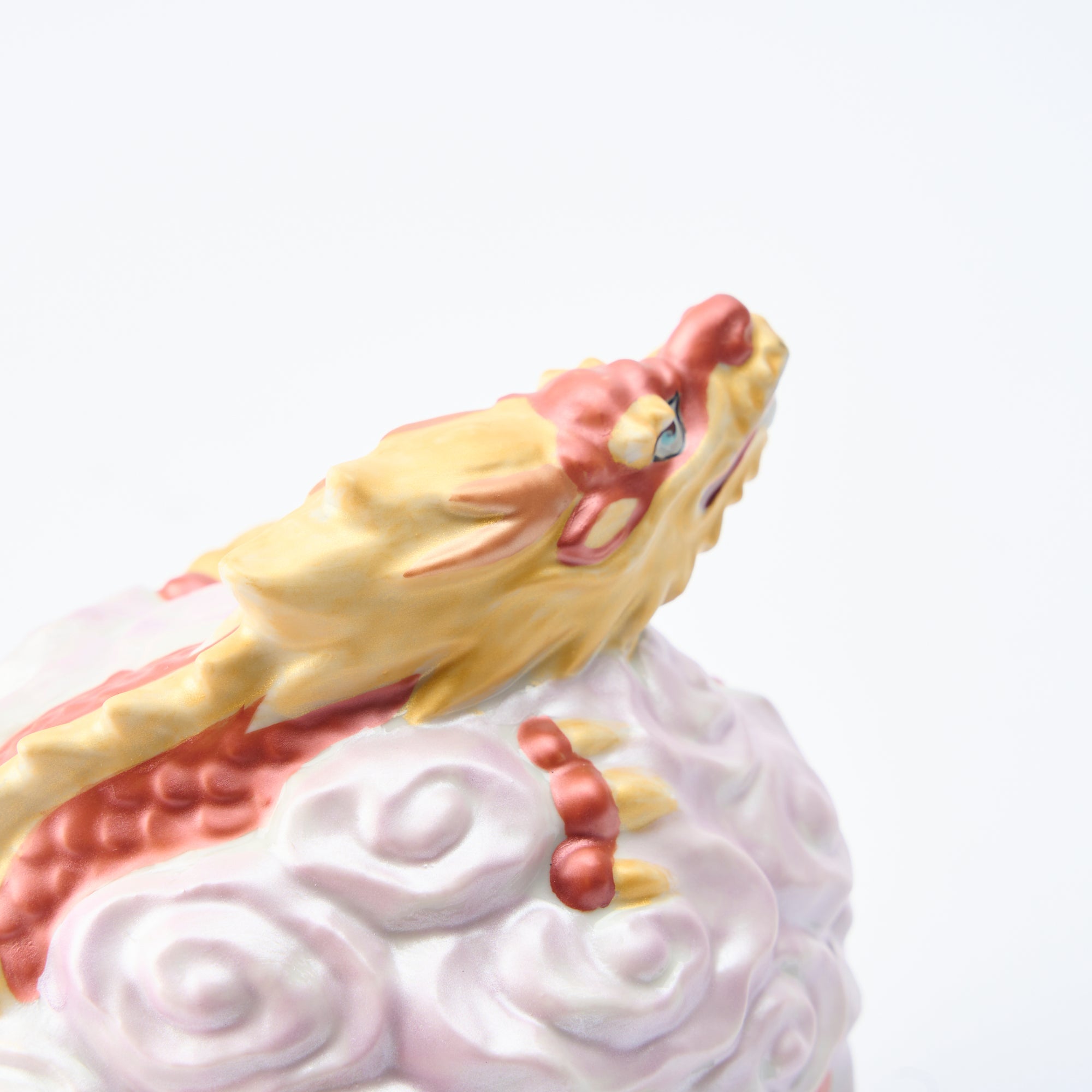
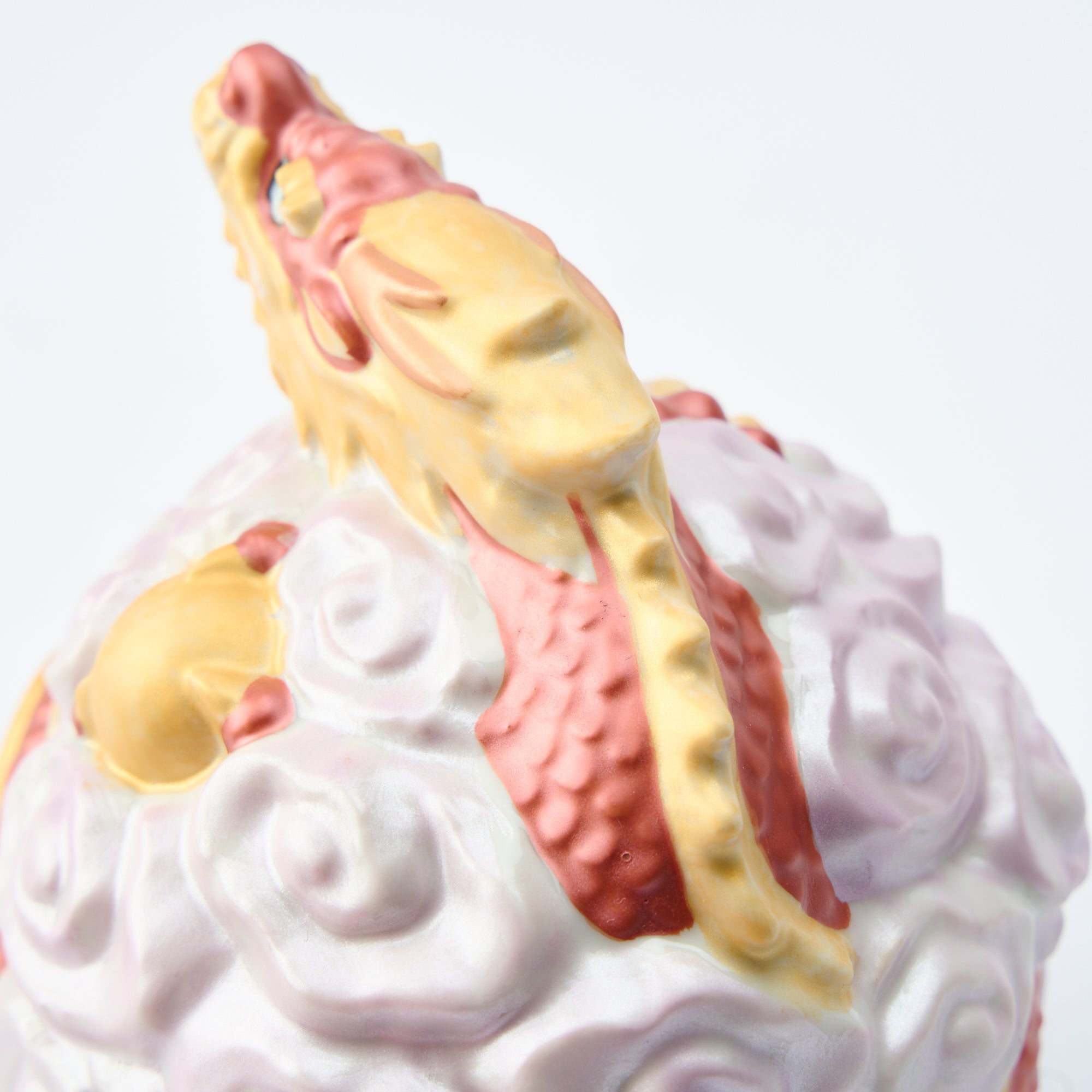
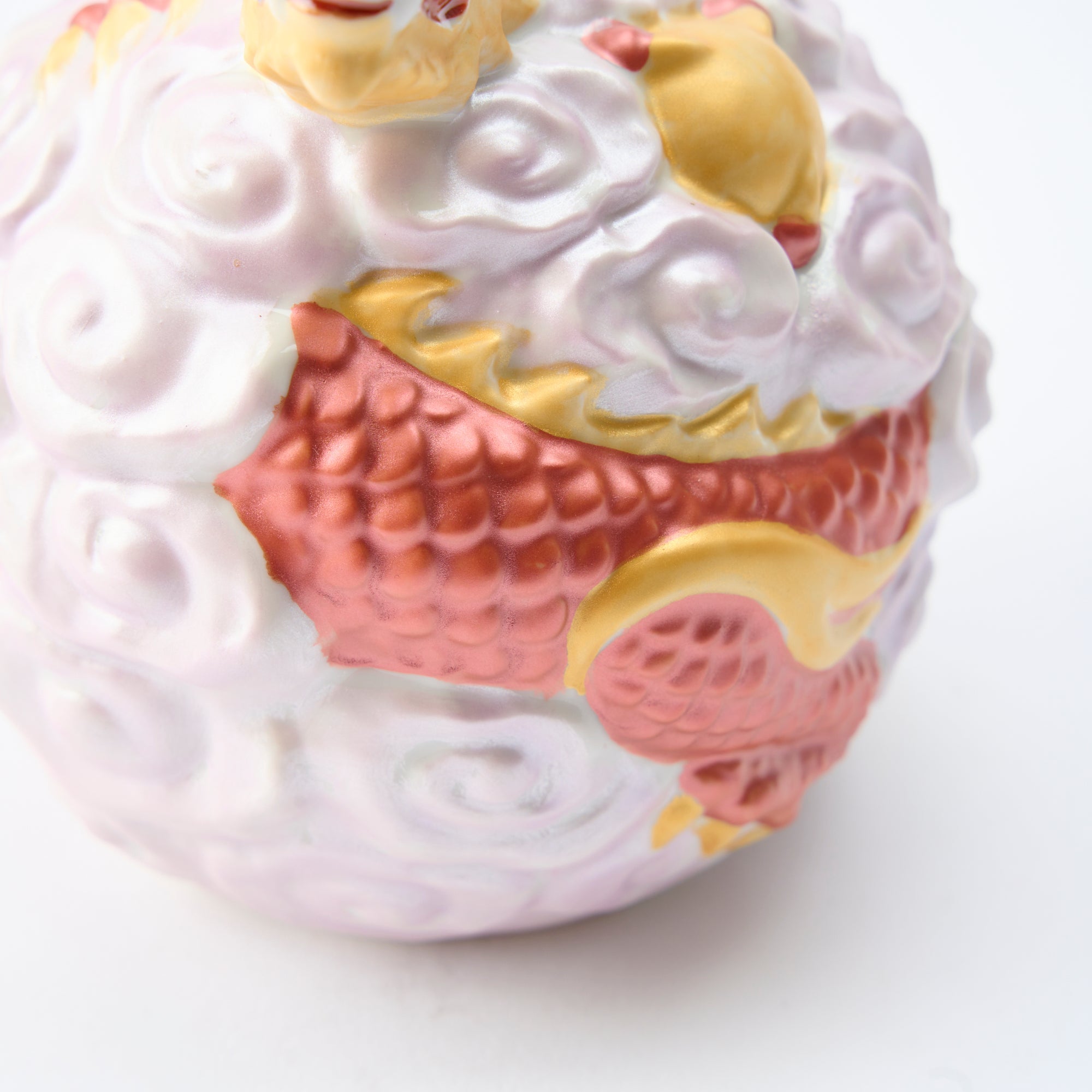
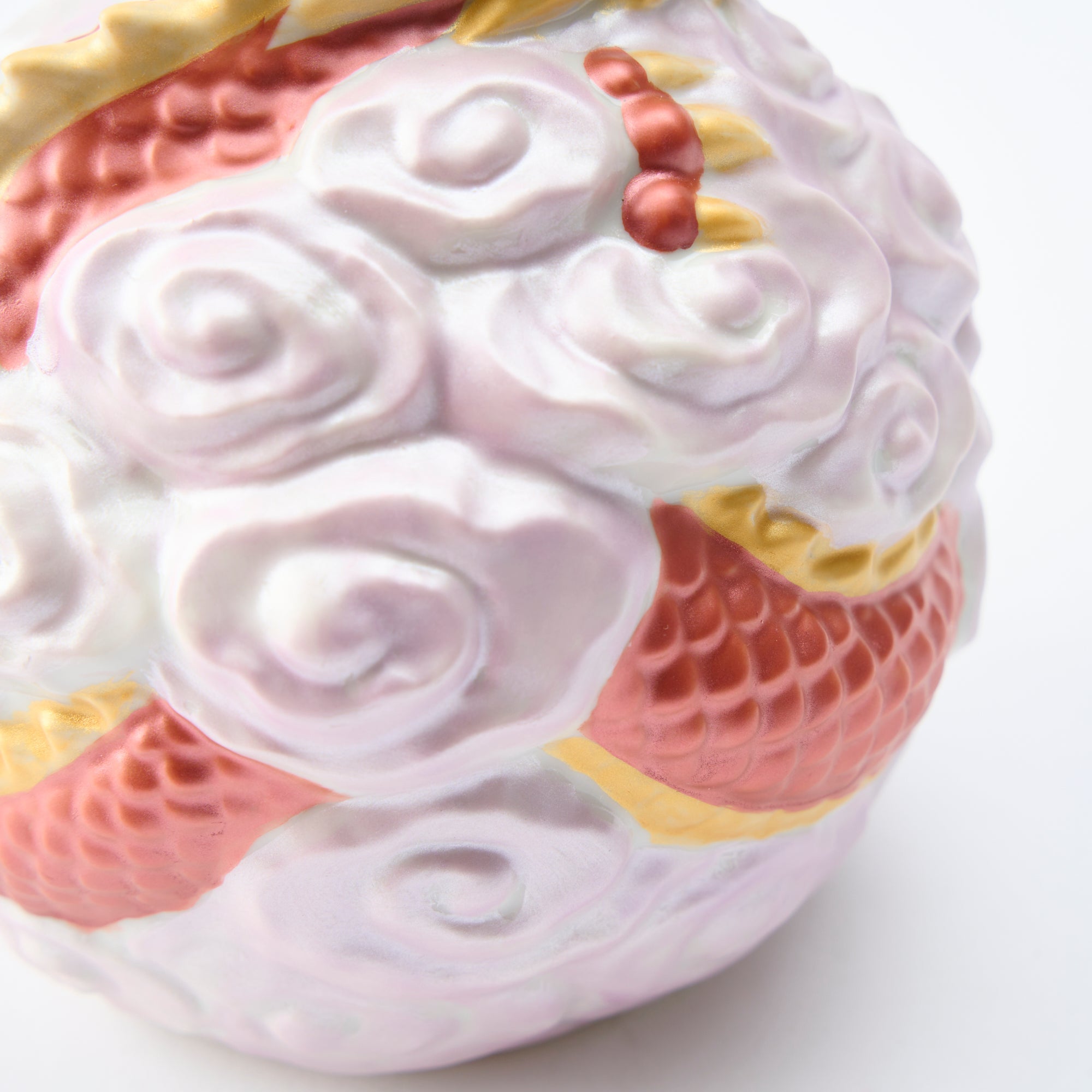
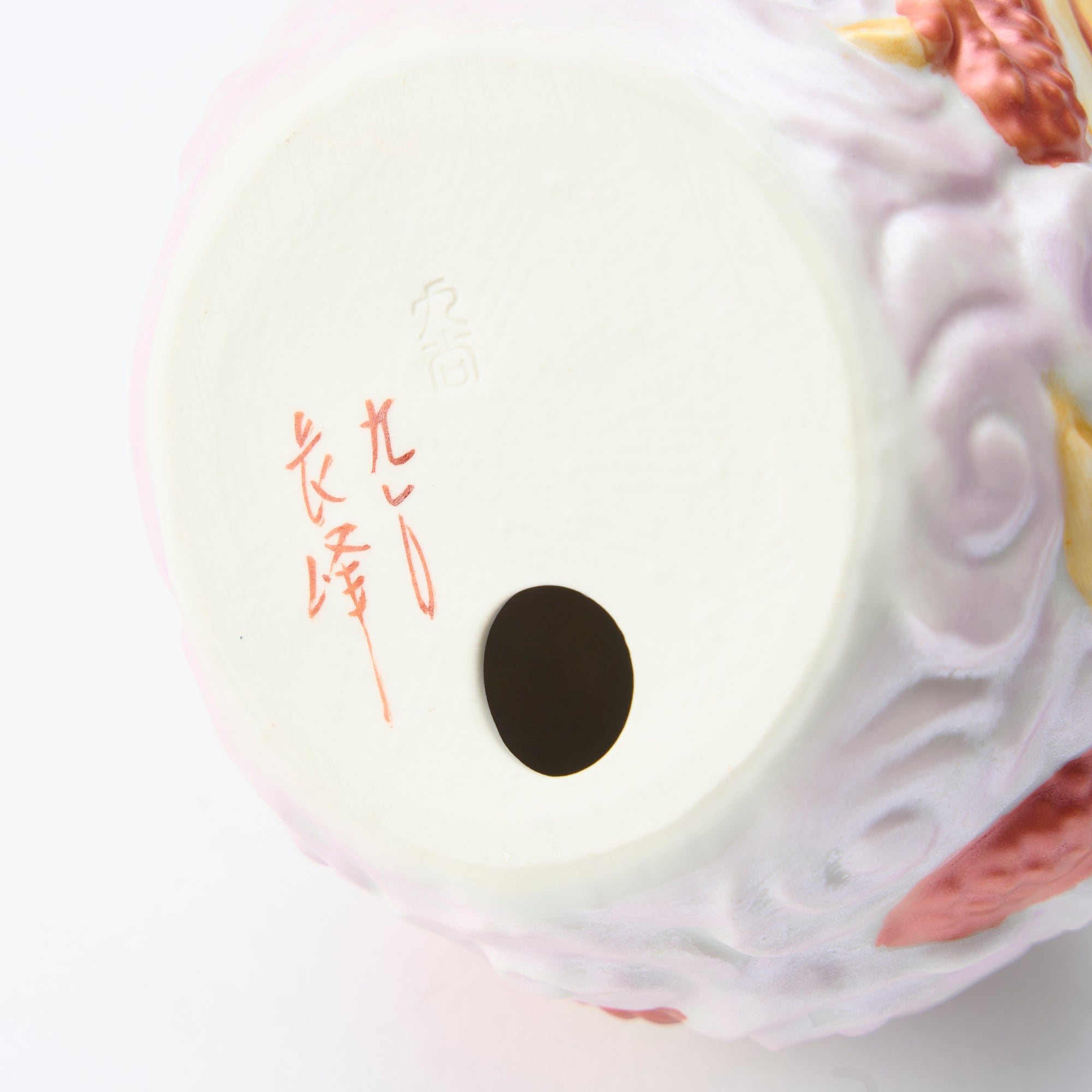
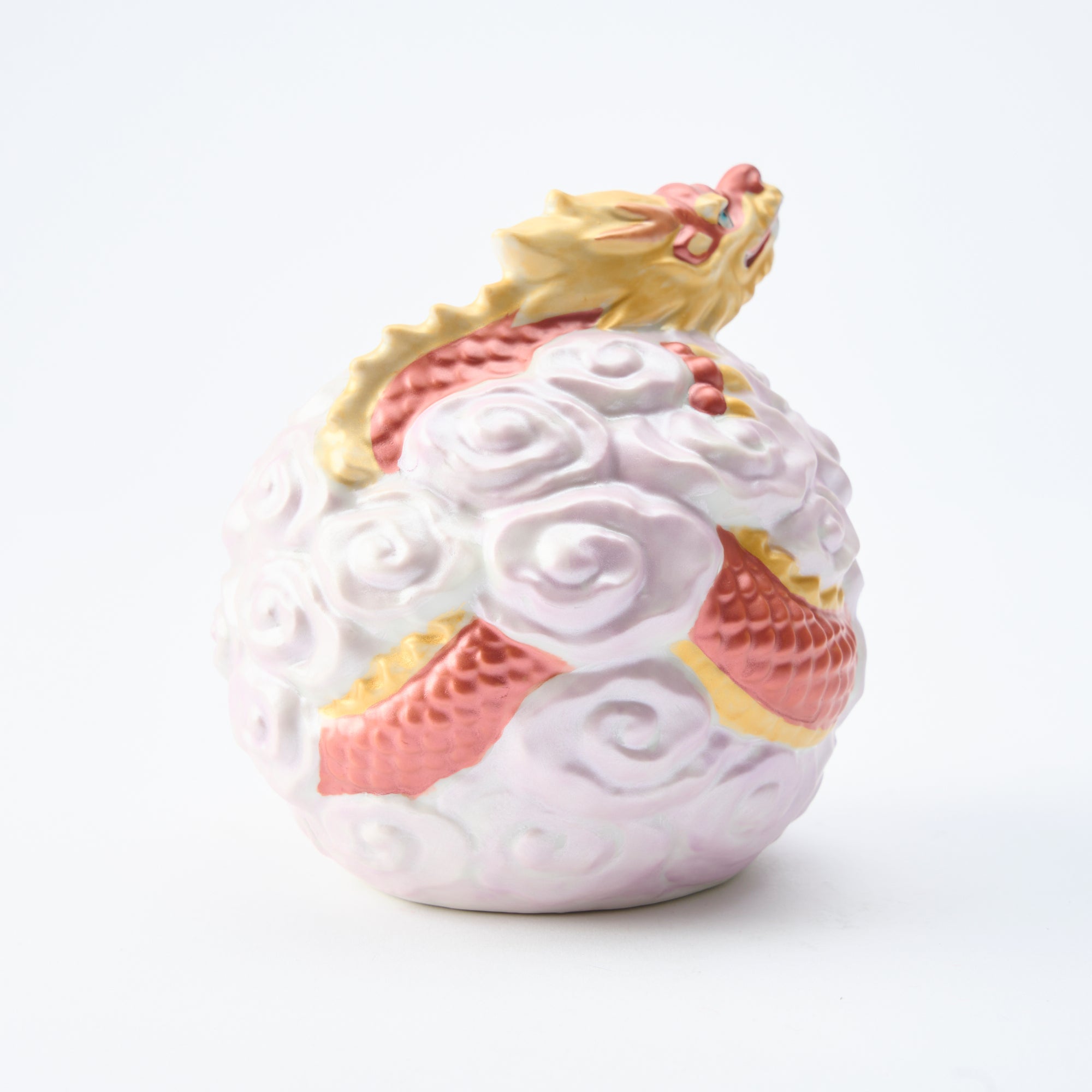
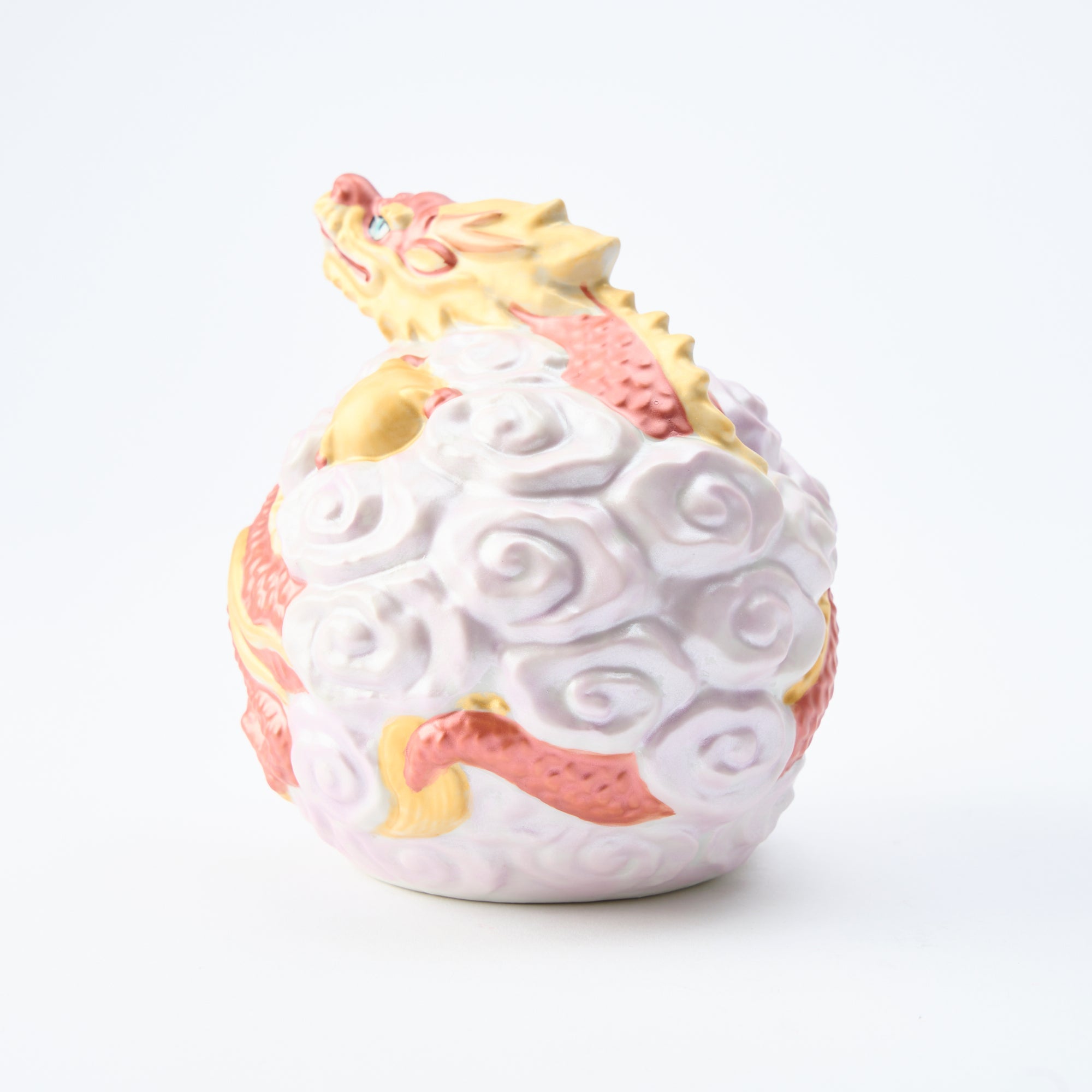
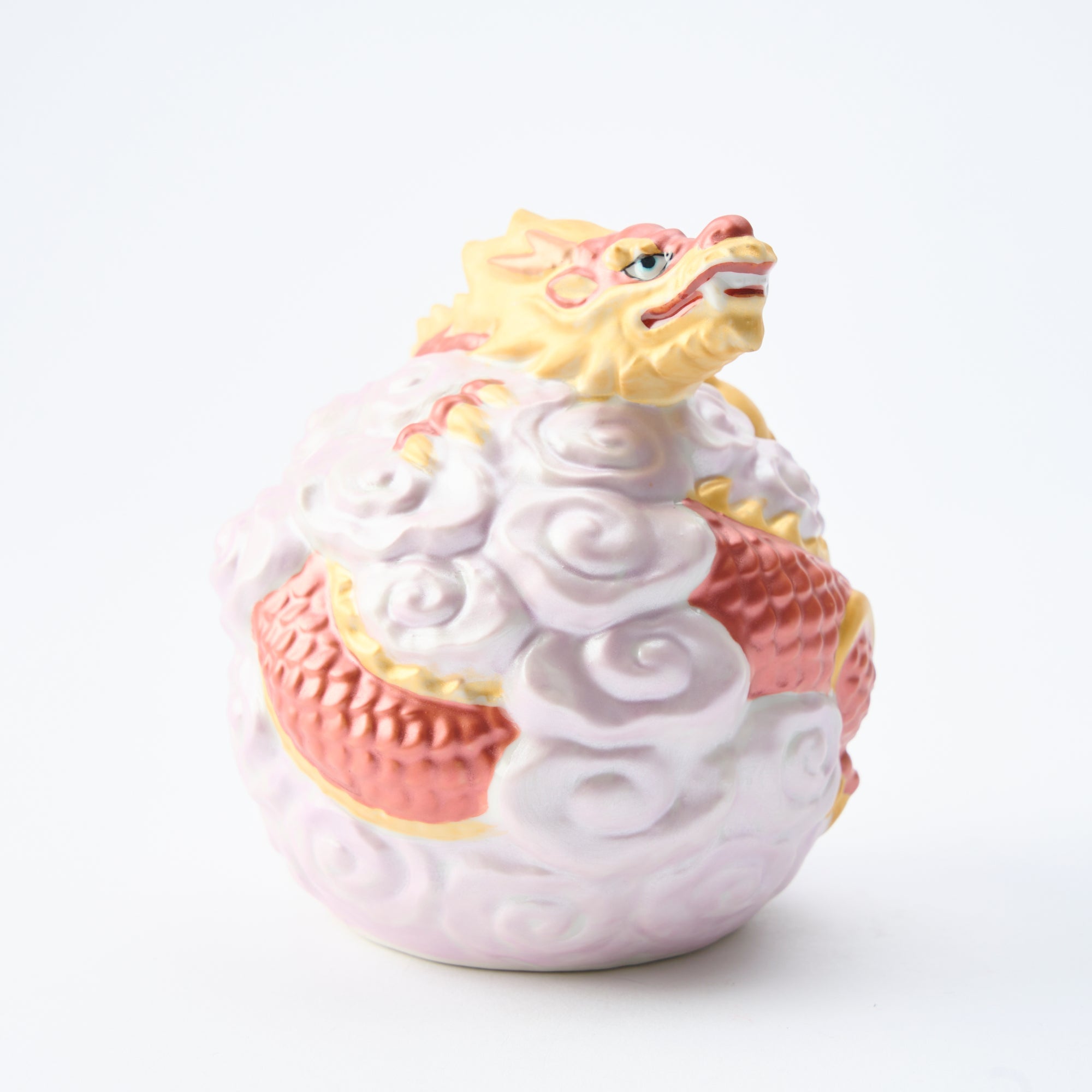
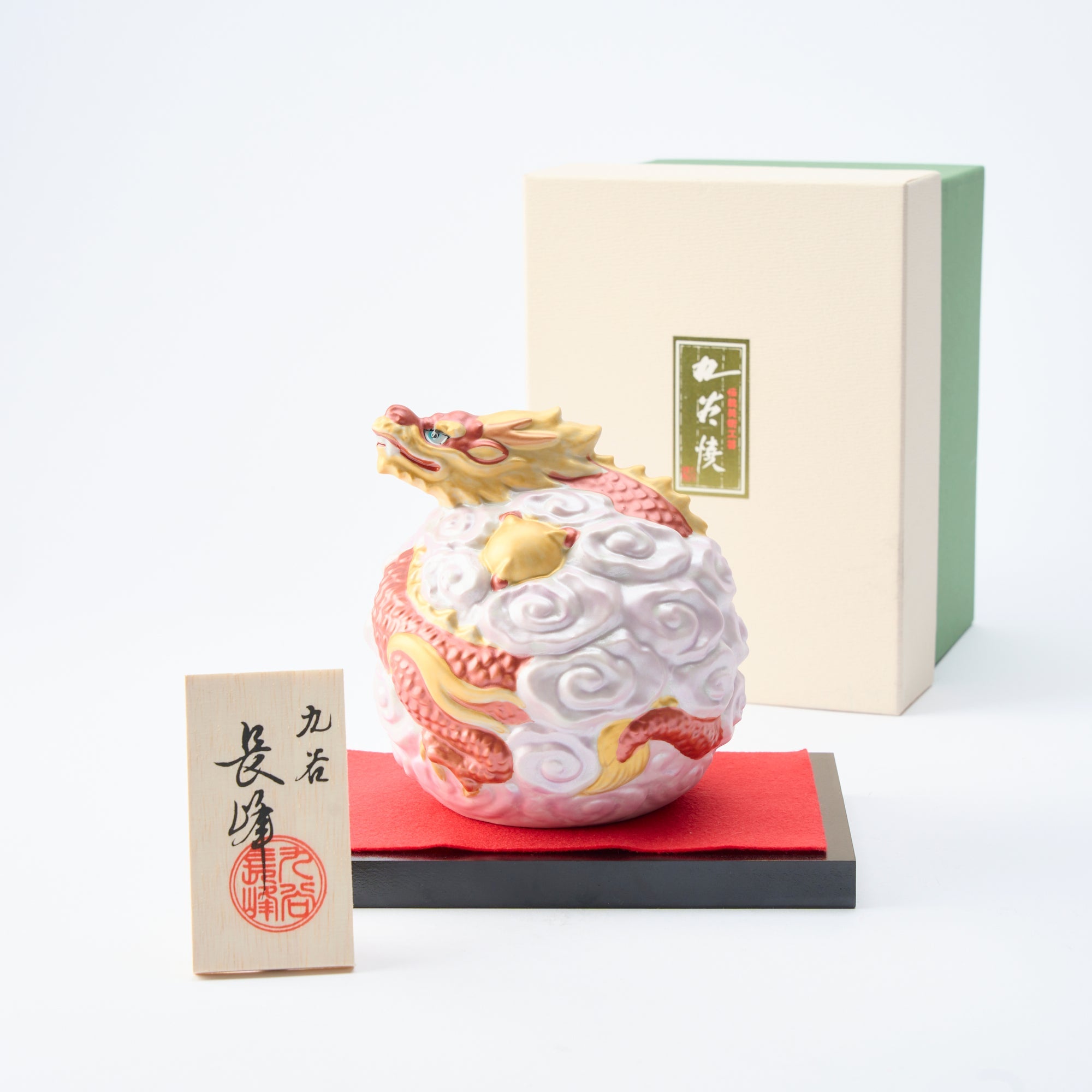
Kinsai Jewel Dragon
Estimated Shipping Widget will be displayed here!
This Kutani ware auspicious item, crafted with meticulous attention to detail, presents the powerful and auspicious image of a dragon, a revered symbol in many cultures. The dragon is celebrated for bringing good harvests, fishing luck, and for warding off misfortune. Its strong form is believed to attract positive energy and prosperity, particularly in terms of wealth.
The dragon is beautifully depicted with a body of red scales, peeking out from a spherical cluster of pink clouds. Golden feathers crown the dragon, enhancing its majestic appearance, and in its hand, it holds a hoju "sacred gem," believed to have the power to grant thoughts and wishes. As a symbol of abundance and the breaker of bad luck, this dragon powerfully represents rising fortune and familial prosperity.
Kutani craftsmen meticulously hand-paint each detail, utilizing pearl-like paint. This, in harmony with the shimmering hues of mica gold (a type of non-metallic Western paint), gives the piece a radiant finish.
DETAILS
| Quantity | 1 set |
| Size | L 12 cm (4.7 in) x W 12.5 cm (4.9 in) x H 12.8 cm (5.0 in) |
| Material | Porcelain, wood, felt |
| Package Type | Paper box |
Maker / Brand
Chosaku Nishi, the founder of Choho Kiln studied the method of Mori-e with his brother Taikichi back in the Taisho period. Up till that time, this method was used to decorate flat surfaces. The brothers developed the idea of applying this method to Kutani Ware figurines as Chosaku had studied the basics of form, design and color mixing as a teenager. As it turned out, the Mori-e technique suited Kutani Ware figurines very well, and henceforth Mori-e became the mainstream decorating technique for Kutani Ware figurines.
The second generation Choho learned various techniques from his predecessor, trained many apprentices, and solidified the foundation of Choho Kiln. Today, Choho is the third generation of the Choho family, and is committed to preserving the tradition of Mori-e while seeking out new possibilities for this traditional technique.
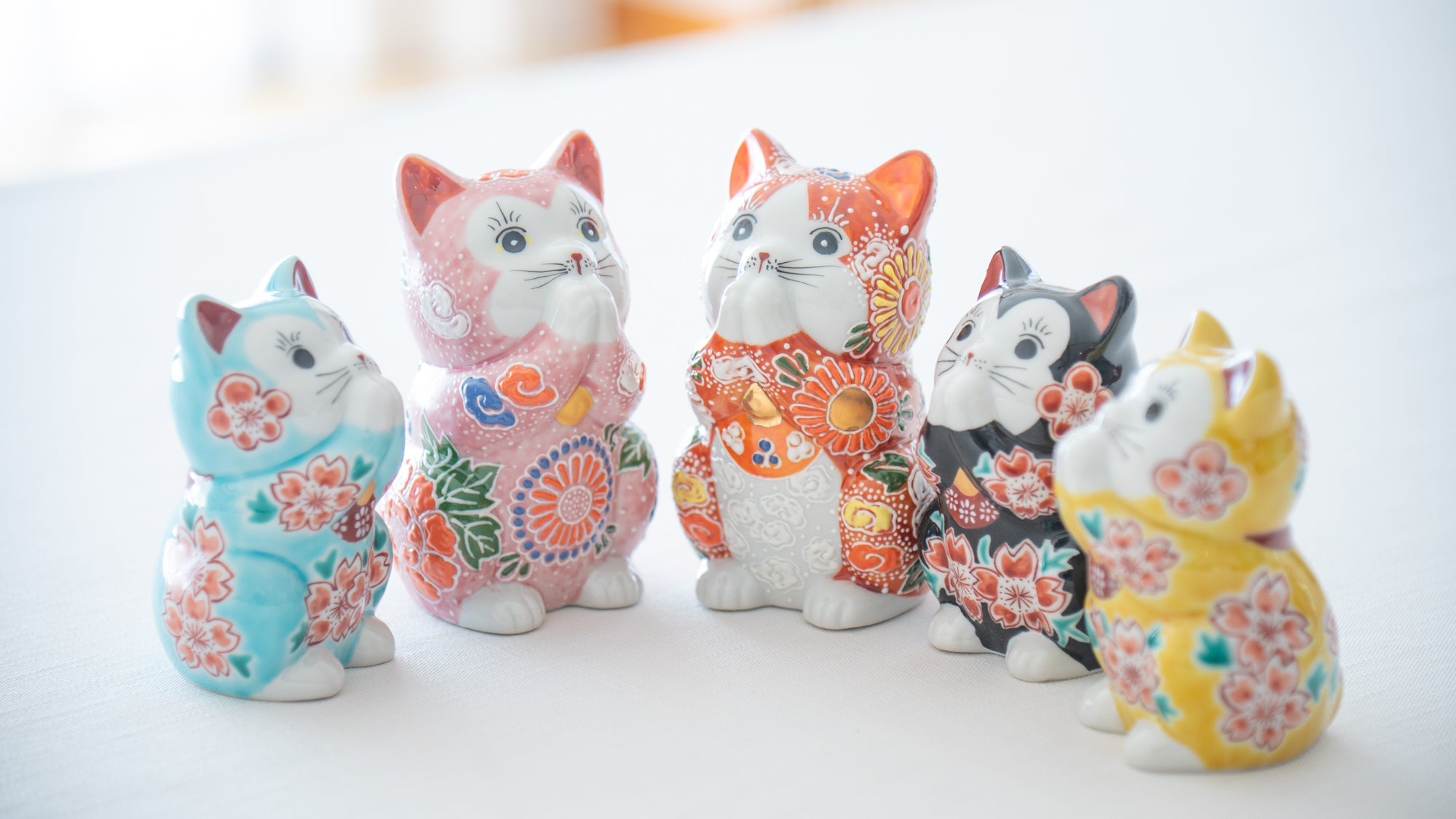
Crafts
Kutani ware is a pottery produced in the Kaga region of Ishikawa Prefecture, with a history spanning over 350 years. It is characterized by the heavy brilliance of the five colors of navy blue, red, purple, green, and yellow that are applied to the bold and daring lines. Its long history has evolved through the tireless efforts and enthusiasm of people who have sought innovation while maintaining tradition.
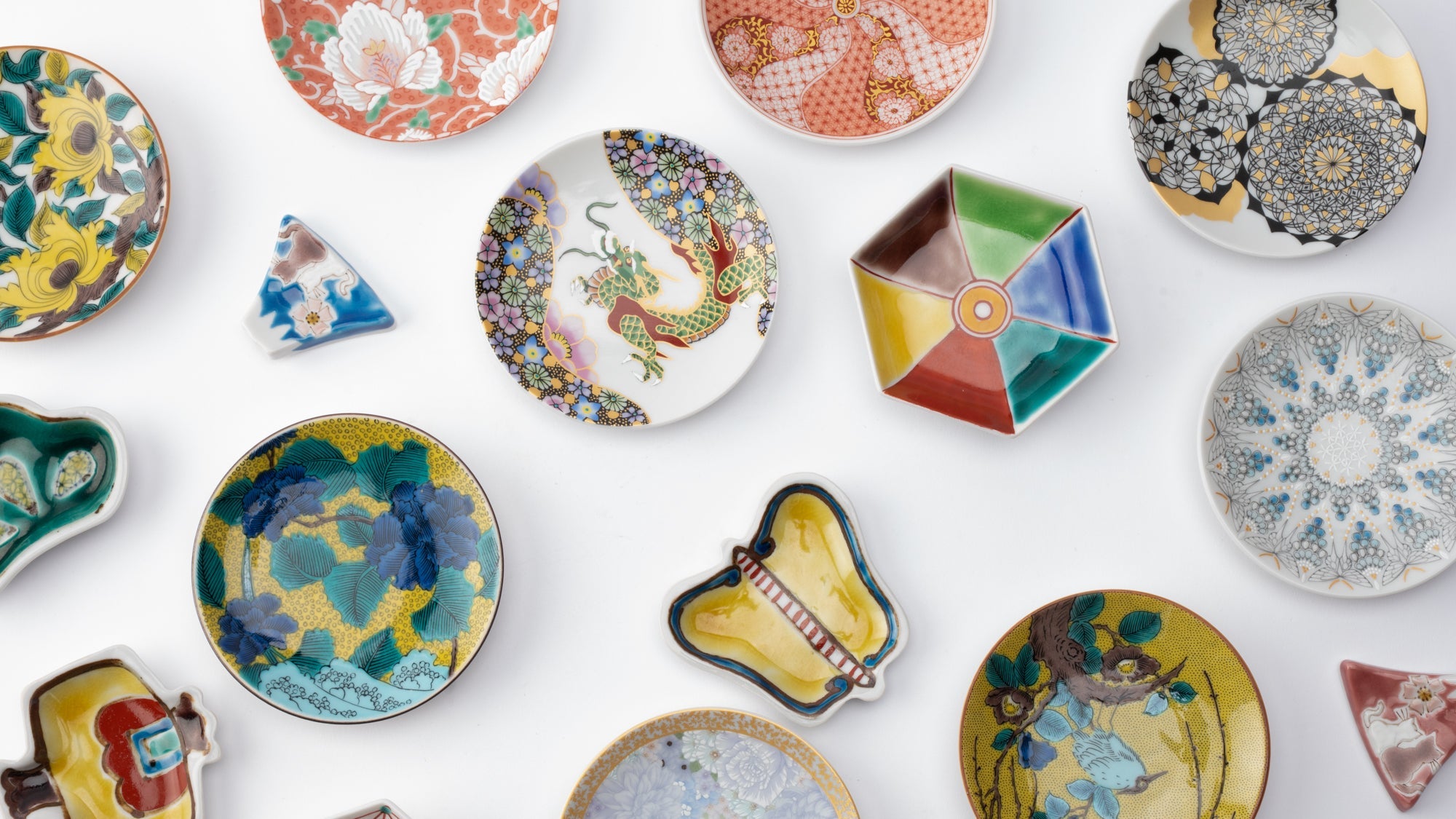
Choose options















Japanese Dolls & Decor
Experience the timeless charm of Japanese dolls and Japanese figurines, symbols of cultural heritage and artistic craftsmanship that have been cherished for generations. Our curated collection of Japanese dolls showcases exquisite hand-painted details, elegant silhouettes, and the storied traditions that inspire their creation.
Each figurine transforms any space into a corner of refined beauty, inviting a deeper appreciation for the craftsmanship and history that make these Japanese doll treasures so enchanting. Whether you’re a seasoned collector or discovering these cultural icons for the first time, our selection promises to connect you with the enduring spirit and serenity of Japan.
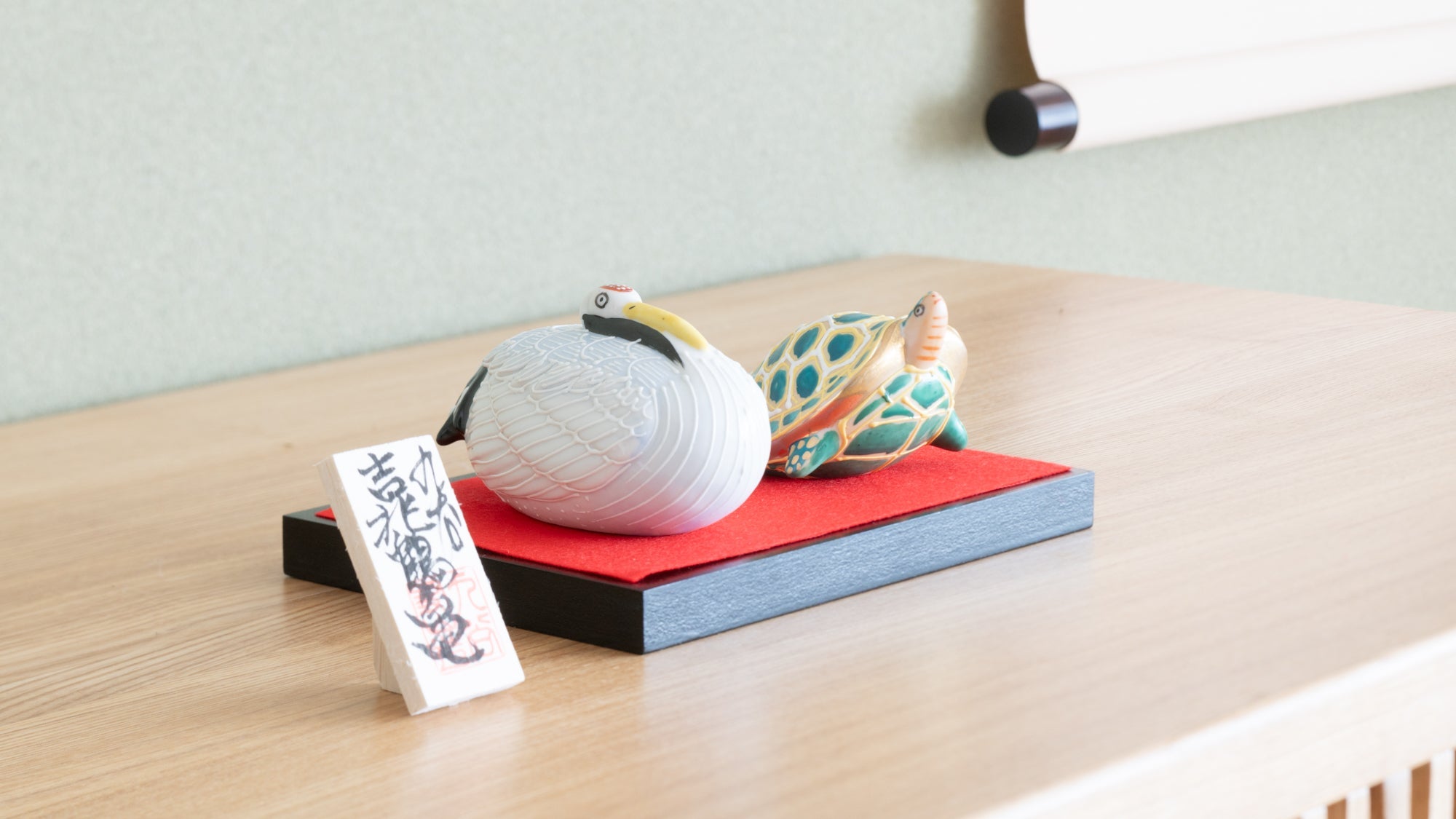
Dragon
Dragons are a symbol of strength, courage, and good fortune. They are also one of the twelve signs of the Japanese zodiac. Dragon pieces promise to enhance your home with their unique beauty, protective fierceness, and auspicious charm.
